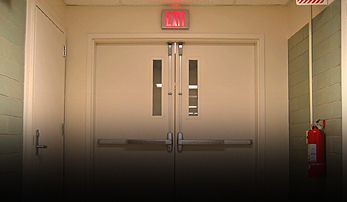Beyond the Classroom Expert education news consult insights shaping student success.
- Beyond the Classroom: Expert education news consult insights shaping student success.
- The Rise of Personalized Learning
- The Role of Technology in Bridging Achievement Gaps
- The Growing Importance of Social-Emotional Learning
- The Future of Assessment
- The Impact of Educational Policies on Student Outcomes
- The Role of Parents and Community Involvement
- Addressing the Teacher Shortage
- The Impact of Mental Health on Student Learning
Beyond the Classroom: Expert education news consult insights shaping student success.
In today’s rapidly evolving world, staying informed about developments in education is paramount for students, educators, and parents alike. The landscape of learning is constantly shifting, driven by technological advancements, evolving pedagogical approaches, and changing societal needs. Access to reliable education news consult is crucial for navigating these changes effectively. This article delves into key trends, challenges, and opportunities shaping the future of education, offering insights to help stakeholders make informed decisions and foster student success.
The Rise of Personalized Learning
Personalized learning, tailoring educational experiences to meet individual student needs, is gaining significant traction. Traditionally, education has followed a one-size-fits-all model, but this approach often fails to engage all learners effectively. Personalized learning utilizes data analytics and adaptive technologies to identify each student’s strengths, weaknesses, and learning preferences. This allows educators to create customized learning paths that maximize individual potential. The benefits extend beyond academic performance, fostering greater student motivation and self-directed learning skills.
Implementing personalized learning requires a shift in mindset and infrastructure. Schools need to invest in technologies that facilitate data collection and analysis, as well as provide professional development for teachers to effectively interpret and utilize this data. However, the potential rewards – increased student engagement, improved academic outcomes, and a more equitable learning environment – make the investment worthwhile.
| Adaptive Learning Platforms | AI-powered software, data analytics | Customized content, real-time feedback |
| Learning Analytics | Data mining, predictive modeling | Identifies learning gaps, predicts student performance |
| Individualized Education Programs (IEPs) | Collaboration between teachers, parents, and specialists | Addresses specific student needs, provides tailored support |
The Role of Technology in Bridging Achievement Gaps
Technology holds immense potential for bridging achievement gaps and providing equal access to quality education. Online learning platforms, educational apps, and virtual reality simulations can break down geographical barriers and offer learning opportunities to students in underserved communities. Furthermore, assistive technologies can support students with disabilities, enabling them to participate fully in the learning process. However, it’s important to address the digital divide, ensuring that all students have access to the necessary technology and internet connectivity.
Effective integration of technology requires careful planning and thoughtful implementation. Simply providing students with devices is not enough; teachers need to be trained on how to use technology to enhance their instruction and create engaging learning experiences. Equity must be a central consideration, as technology can exacerbate existing inequalities if not implemented carefully.
The Growing Importance of Social-Emotional Learning
In addition to academic skills, social-emotional learning (SEL) is increasingly recognized as a critical component of a well-rounded education. SEL encompasses the development of self-awareness, self-regulation, social awareness, relationship skills, and responsible decision-making. Students with strong social-emotional skills are better equipped to manage stress, build positive relationships, and succeed in school and in life. Research consistently demonstrates a strong correlation between SEL and improved academic performance, reduced behavioral problems, and increased overall well-being.
Integrating SEL into the curriculum requires a whole-school approach. This includes creating a supportive and inclusive school climate, providing professional development for teachers on SEL strategies, and integrating SEL lessons and activities into existing coursework. It necessitates a shift in focus from solely academic achievement to the holistic development of the student.
The Future of Assessment
Traditional assessment methods, such as standardized tests, are facing increasing scrutiny. While standardized tests can provide a snapshot of student performance, they often fail to capture the full range of a student’s skills and knowledge. There is a growing movement towards more authentic assessment practices, such as project-based learning, portfolios, and performance-based tasks, that allow students to demonstrate their learning in meaningful and relevant ways. These assessments provide a more holistic view of student abilities and promote deeper understanding.
Shifting to authentic assessment requires a re-evaluation of grading practices and a focus on providing students with constructive feedback. The primary goal of assessment should be to inform instruction and support student learning, rather than simply assigning grades. This requires teachers to be skilled in designing and implementing effective assessments, as well as providing timely and specific feedback.
The Impact of Educational Policies on Student Outcomes
Educational policies play a crucial role in shaping student outcomes. Policies related to funding, curriculum standards, teacher quality, and school choice can all have a significant impact on the quality of education. It’s vital that these policies are informed by research and based on a clear understanding of the needs of students and communities. Furthermore, policies should be equitable, ensuring that all students, regardless of their background or location, have access to a high-quality education. Continuous evaluation and adjustment are necessary to ensure their effectiveness.
Challenges arise when policies are implemented without adequate funding or support for teachers. Effective implementation requires investing in teacher professional development, providing schools with the resources they need, and fostering collaboration between policymakers, educators, and community stakeholders. A commitment to equity and a focus on student needs are essential for creating policies that promote positive change.
- Increased funding for public education
- Reduced class sizes
- Enhanced teacher training programs
- Expansion of early childhood education
- Greater access to technology and internet connectivity
The Role of Parents and Community Involvement
Parental and community involvement are essential for creating a supportive learning environment. When parents are actively engaged in their children’s education, students tend to perform better academically and have higher levels of motivation. Schools can foster parent involvement through regular communication, parent-teacher conferences, volunteer opportunities, and workshops on parenting skills. Community partnerships can also provide valuable resources and support to students and schools. Collaboration between educators and community organizations, businesses, and non-profits can create enriching learning experiences and prepare students for success in the future.
Businesses can offer internships and mentorship opportunities, exposing students to real-world career paths. Non-profits can provide after-school programs and tutoring services, giving students extra support. Strong schools are built on strong relationships with families and the communities they serve. These help establish a foundation for student success that extends far beyond what could be achieved in a traditional classroom alone.
Addressing the Teacher Shortage
A growing teacher shortage poses a significant threat to the quality of education. Factors contributing to the shortage include low salaries, challenging working conditions, lack of support, and declining enrollment in teacher preparation programs. Addressing this crisis requires a multi-faceted approach, including increasing teacher salaries, improving working conditions, providing ongoing professional development, and streamlining the teacher certification process. It is essential to cultivate a pipeline of qualified and dedicated educators to meet the needs of all students.
Attracting and retaining talented teachers requires creating a supportive and rewarding profession. States and districts must invest in creating positive school cultures, providing opportunities for collaboration and leadership, and recognizing the valuable contributions of teachers. Empowering teachers and giving them a voice in decision-making can also foster greater job satisfaction and retention.
- Increase teacher salaries and benefits
- Provide mentorship programs for new teachers
- Offer flexible work arrangements
- Reduce administrative burdens
- Invest in ongoing professional development
The Impact of Mental Health on Student Learning
The mental health of students is a growing concern. Increasing rates of anxiety, depression, and other mental health challenges among young people are impacting their ability to learn and succeed in school. Schools play a vital role in supporting student mental health by providing access to counseling services, implementing mental health awareness programs, and creating a safe and supportive school climate. Early intervention and prevention are essential for addressing mental health challenges before they escalate. Addressing this issue can create a better learning environment for all students and will ultimately impact academic performance.
Training teachers and staff to recognize the signs of mental health distress is crucial, as is providing students with resources and support. A collaborative approach involving parents, healthcare professionals, and community organizations is necessary to ensure students receive the care they need. Providing students with strategies for managing stress and building resilience can empower them to navigate challenges and thrive.
The educational landscape is in constant flux, driven by innovation and evolving needs. Continued investment in research, technology, and teacher development is crucial for ensuring that all students have access to a high-quality education. By embracing personalized learning, prioritizing social-emotional development, and addressing systemic challenges, we can create a future where education empowers all learners to reach their full potential. Collaboration between educators, policymakers, parents, and community members is key to shaping a brighter future for education.









Recent Comments